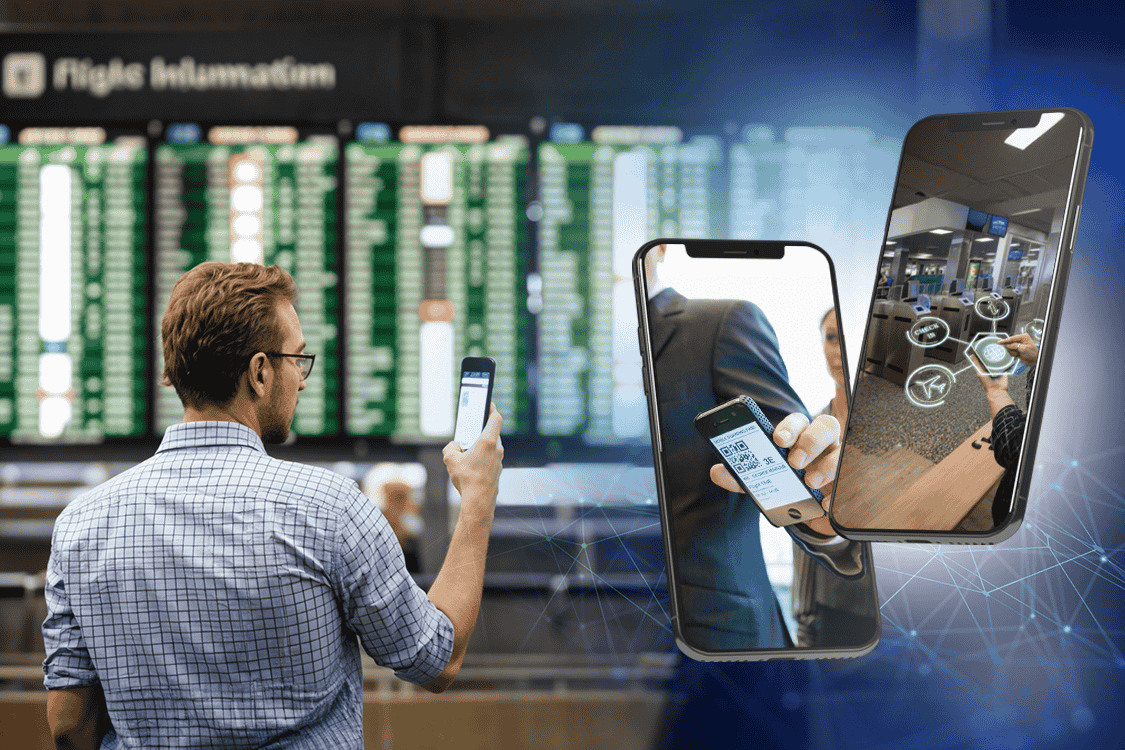IoT Solutions

It’s no small feat managing airport passenger flow. Due to air travel continuing to rise, airports are now challenged by high volumes of passengers and the need for them to be secure, comfortable and processed seamlessly. In addition, delays, long lines and poorly designed layouts frustrate travelers and damage airport performance. Then enters IoT in airport management. Not only can it provide real-time tracking and automated monitoring, it also comes with data-driven decision-making insights to optimize airport operations.
As a result, all around the world, airports are increasingly embracing IoT-powered solutions to smooth passenger movement, eliminate congestion and optimize their facilities. From intelligent asset and staff tracking to heat maps that show bottlenecks, IoT is enabling airports to work smarter and quicker.
Here’s a closer look at how IoT is transforming airport passenger flow to improve passenger traffic and where the technology provided by Mapsted comes into play.


How IoT Improves Airport Passenger Flow
1. Real-Time Wait Time Monitoring
In general, travellers often embrace long security lines, immigration checks and baggage claims with little frustration. To streamline this, IoT sensors can also be used to track passenger movement in real time, allowing airports to recognize congestion points and work to reduce wait times.
🔹 How it helps:
- We’re using smart sensors at checkpoints to monitor the density of crowds.
- Automated systems notify airport personnel when the queues get too lengthy.
- Real-time updates on wait times are offered to passengers through their airport apps.
For example, London Heathrow employs IoT-based queue management systems to reduce wait times during peak business hours by 20%.
For instance, London Heathrow employs IoT-based queue management systems to reduce wait times during peak business hours by 20%.
Mapsted’s Role: Using Mapsted Flow, we offer real-time wait-time monitoring as well as heatmap visualization to improve security lines, check-in counters and boarding gates at airports.
2. Heatmaps for Better Space Utilization
Some parts of an airport become congested, while others are neglected. However, before passengers build up, IoT-powered heat maps endeavor to assign space where the congestion builds.
🔹 How it helps:
- Operation teams can label hub areas in terminals.
- It necessitates revamping seating, signage and services to promote better flow at airports.
- Helps plan available for retail stores and duty-free outlets.
- Note for example how Singapore’s Changi Airport used heatmap analytics based on real-time passenger movements to optimize seating arrangements and available terminal layouts, thereby preventing overcrowding at peak travel hours.
Mapsted’s Role: The map flow in Mapsted heatmap visualization allows airports to analyze which locations have a higher number of passengers and rearrange the terminal layout according to the results of the analysis.
3. Smart Crowd Management
While crowd control is one solution to reduce delays, it is also essential to sidestep safety issues and unpleasant traveler experiences. IoT solutions wrap crowds around airport by monitoring movement patterns and making adjustments in real time.
🔹 How airport passenger flow solutions helps:
- Digital signs direct passengers to less crowded areas.
- The system leads people to check-in counters using automated notifications.
- Real-time data are used to maximize staff deployment.
IoT use cases in airport management: For instance, Dubai International Airport has implemented an IoT-enabled crowd monitoring system, reducing 30% wait times in waiting areas and other areas.
Dubai International Airport has implemented an IoT-enabled crowd monitoring system, reducing 30% wait times in waiting areas and other areas.
4. Automated Asset Tracking
All things considered, airports have thousands of assets to manage, from baggage carts and wheelchairs to maintenance equipment. How IoT is transforming airport passenger flow is by using IoT tags and sensors to enable real-time asset tracking, ensuring asset availability.
🔹 How IoT for airport operations helps:
- Minimise time loss by searching for equipment.
- Help prevent asset theft and misplacement.
- Offers expedited turnaround of luggage carts, wheelchairs and passenger assistance services.
For Instance: Hong Kong International Airport uses tracking of baggage carts, lowering lost carts by 40%.
Mapsted’s Role: Track assets in real-time, avoid loss and theft and better allocate assets with Mapsted Tags
5. Staff Monitoring for Better Service
In the event of a passenger emergency, all passengers think about taking care of it quickly and the staff who work under it get stuck, which causes the passengers to face the problem a lot. IoT wearables and tracking systems also aid airports in tracking staff location and movement.
🔹 How it helps:
- It helps keep staff where they are needed most.
- Enhances response time to passenger questions and emergencies
- Aids in fine-tuning staff scheduling.
Example: IoT-based workforce tracking helped Atlanta’s Hartsfield-Jackson Airport reduce staff response time by 25%.
Mapsted’s Role: The Mapsted Badge allows airports to monitor their personnel as they work in real-time, enabling improved service response and operational efficiency.
6. Smarter Security and Emergency Response
Immediate response is needed for security threats and medical emergencies. The IoT-based monitoring system is of great help in detecting such situations earlier and responding faster to critical situations.
🔹 How it helps:
- AI facial recognition for security screening in surveillance cameras
- Smart wearables provide alerts during medical emergencies.
- For example, IoT-connected alarms that detect unwanted access to restricted areas.
The Bigger Impact of IoT in Airports
Passenger flow management IoT technology not only enhances passenger flow but also maximizes airport efficiency and profitability. Here’s how:
✔️ Lower Operational Costs – Intelligent monitoring results in decreased manual labor costs as well as enhanced energy efficiency
✔️ Greater Passenger Satisfaction – The major role role of IoT in enhancing airport efficiency is Decreased wait times and improved navigation facilitate a better traveler experience.
✔️ Uplift Revenues – Optimised retail placement and frictionless passenger flow trigger uplift in airport retail.
✔️ Improved Resource Allocation – Deciding with data helps avoid bottlenecks and utilizes efforts efficiently.
Future Visibility: In the year 2030, it is predicted that major airports will have integrated the Internet of Things (IoT) solutions, paving the way for faster and convenient travel.
Final Thoughts
Smart airports IoT technology for increased passenger volumes in airports tracking, heatmaps and automated management by the IoT make operations smoother, safer and cheaper.
For airports seeking to decongest, enhance service and better utilize resources, it’s technology like Mapsted Flow, Mapsted Tags and Mapsted Badge that is changing how IoT is transforming airport passenger flow. This tech provides real-time insights without the capital expenditures that come with hardware deployment. To improve your airport operations or get started with passenger flow management system with IoT?
Book a demo with Mapsted now. If you found this blog helpful, please read our blog on Use Cases and Benefits of IoT Asset Tracking in the Transportation Industry or watch our video on Maximize Terminal Efficiencies and Ease Traveller Stress With Location-Based Technology to learn more.
Frequently Asked Questions
Q1: How does IoT improve passenger flow in airports?
A: IoT is used to track real-time movement, minimize waiting times and optimize facility layouts for a smoother passenger flow.
Q2: Can IoT help reduce airport congestion?
A: Yes, getting smart crowd management systems and IoT-powered heatmaps to guide travelers to less congested zones.
Q3: How do airports use IoT for asset tracking?
A: IoT tags track baggage carts or wheelchairs and equipment to ensure they are available and to reduce loss.
Q4: Does IoT improve staff efficiency at airports?
A: The correct answer is: real-time staff tracking allows for faster response and an efficient workforce allocation.
Q5: How does IoT enhance airport security?
A: Comparison Chart: Effective Security Management with IoT-Enabled Solution Edge.

